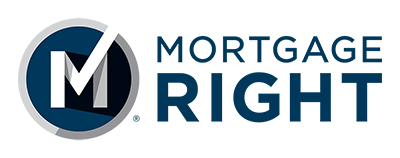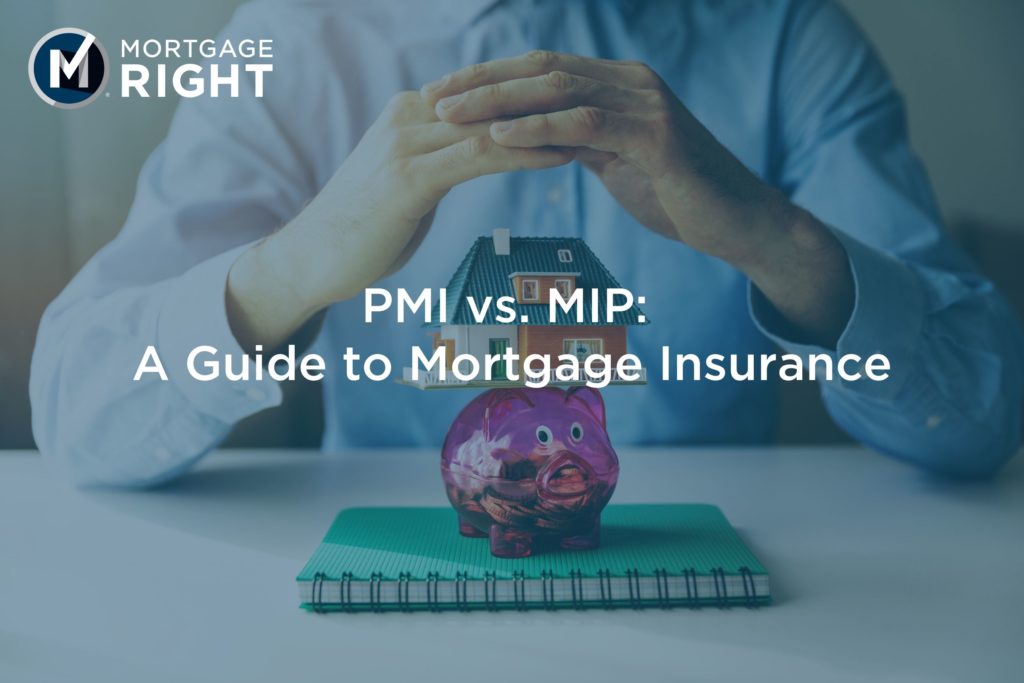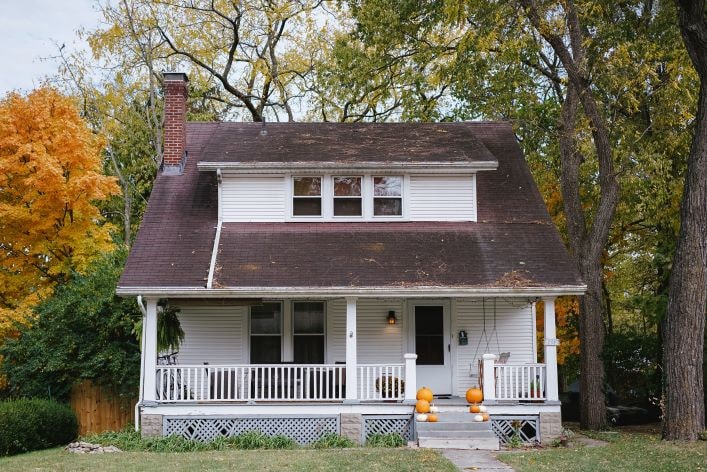
Interest rates listed are not generated from MortgageRight. Those are rates generated from Freddie Mac and Mortgage News Daily as a reference to the current status of the mortgage industry. Interest rate, program terms, and conditions are subject to change based on borrower eligibility and market conditions. Certain restrictions and conditions will apply and not all applicants will qualify.

Mortgage insurance is a gateway to homeownership. It adds an extra layer of accessibility for those who can’t put forward a sizable down payment. By paying mortgage insurance in addition to the monthly mortgage payment, a borrower can buy the home of their dreams with less than 20% down.
Private mortgage insurance (PMI) and a mortgage insurance premium (MIP) are the two most common types of mortgage insurance. Though these types of mortgage insurance are prevalent, which one you get depends on a variety of factors.
PMI
Private mortgage insurance is a cost only applicable to conventional (or non-government-backed) loans. PMI is an “assurance fee” typically applied to monthly payments if a borrower cannot put 20% or more down on the home they purchase. PMI acts as a buffer for lenders when the risk of default is on the table while making homeownership possible for borrowers who can only put a small percentage down on the home they want.
MIP
A mortgage insurance premium is much like PMI, but it only applies to government-backed (FHA) loans, and it is required no matter your down-payment amount. This mortgage insurance consists of an annual MIP and UFMIP (upfront mortgage insurance premium).
Beyond the type of loan each mortgage insurance policy applies to, there are other notable differences to keep in mind.
Can You Cancel?
If you put down less than 20% on a conventional loan, mortgage insurance is something you will more than likely have to pay. However, mortgage insurance payments change when you acquire 20% equity in your home. When you reach this equity benchmark, you can request that your lender remove PMI from your mortgage. Even borrowers who get caught up in the motions of paying PMI alongside their mortgage and forget to request a stop on PMI have the chance to see it go.
PMI is automatically canceled once you reach 22% equity based on your original appraised value. As your home value increases, you can request the lender remove PMI if a new appraisal demonstrates the equity is 20% or more of the appraised value.
This is great news for most borrowers who pay PMI, but things work a little differently for those who have FHA loans. Typically, the MIP can’t be canceled on this government-backed loan and is a payment that remains for the duration of the loan regardless of equity.
If the MIP payments tacked onto FHA loans aren’t for you, there are still other options. When your equity reaches 20% or more, you can refinance your home with a conventional loan and no PMI.
Upfront Costs
An FHA loan is a mortgage option that requires both an upfront mortgage insurance premium (UFMIP) and MIP.
With this loan, UFMIP is 1.75% of the amount borrowed. It can either be paid in full at closing or added to the loan amount.
PMI, however, is typically paid annually, with a portion included in each monthly mortgage payment. This prevents you from paying any upfront costs.
Annual Costs
Those who finance their home with an FHA loan will pay an annual MIP. This falls between 0.45% and 1.05% of the loan amount.
Alternatively, the PMI rate is determined by your down payment amount and creditworthiness. PMI rates are typically between 0.58% and 1.86% of the loan amount.
Whether PMI or MIP, mortgage insurance is a payment that many borrowers will come across on their home-buying journey. But it doesn’t have to hold you back from getting your perfect home! Contact us here, and we’ll help you navigate the ins and outs of mortgage insurance with ease!

What does it mean to be a Veteran? Being a veteran means fighting for the freedoms of those you have never met. It means having a willingness to give up everything while expecting nothing in return. Being a veteran means volunteering to leave the home you’ve always known, so others won’t have to. It means that you not only understand the concept of courage, but you embody it.
Most of all, being a veteran means taking off the uniform and rebuilding a civilian life when your service is complete. Here at MortgageRight, we understand how difficult it can be to make the transition from protector to private citizen. To show our appreciation for your sacrifice, we provide easy access to a mortgage made just for you—the VA home loan.
Homeownership can become a hassle if you’re not equipped with the financing option that is right for you. For the vast majority of military borrowers, the VA loan program is the most beneficial. These versatile, $0-down payment mortgages have made it possible for more than 24 million service members to achieve their dream of homeownership.
Despite the program being designed to create a seamless homebuying experience for service members, much of our military population is left in the dark about the program’s unique benefits, and this leads them to choose less favorable loan options.
To be eligible for a VA loan, you must be a veteran or active service member who has satisfied at least one of these service requirements:
Surviving spouses of service members may also qualify if the service member’s life was lost in the line of duty or if they sustained a service-related disability.
Before you can obtain a VA loan, you will need to present your lender with a copy of your Certificate of Eligibility, which is a document provided by The Department of Veteran’s Affairs as proof of your qualification. To prove previous military service, you must provide a Report of Separation (DD Form 214). If you are on active duty, you will need to provide a Statement of Service instead.
Though The Department of Veteran Affairs does not require a minimum credit score to qualify, it is best to maintain a credit score of 620 or higher to ensure third-party lender requirements are met.
Other loan programs usually require at least a 3% down payment when purchasing a home. However, if you’re looking to buy a home with a VA loan, one of its most advantageous aspects is that the down payment requirement is no longer a burden.
For homeowning service members and veterans, refinancing with a VA loan opens the door for a 90% equity cash out. This option replaces your existing mortgage with a new loan for more than you owe on your current mortgage and allows you to pocket the difference if your home has risen in value. This is especially beneficial if you are looking to save for higher education or retirement, pay off higher-interest debt, or make needed home improvements.
Unlike other home loans on the market that require mortgage insurance premiums when the borrower has less than 20% equity in their home, VA loans do not come with any mortgage insurance premiums or private mortgage insurance costs—which helps borrowers save even more each month.
Though a VA loan offers savings opportunities at every corner, it does require a VA Funding Fee (that is 2.3% of the amount borrowed with a VA loan, which increases to 3.6% if you are a previous VA loan borrower).
If you have an existing VA-backed home loan, the IRRRL (Interest rate reduction refinance loan) is another added perk. This program is perfect if you want to reduce your current monthly mortgage payments or increase payment stability.
As a Veteran owned and operated lender, MortgageRight always rises to the challenge of helping active and veteran service members navigate the VA-loan landscape and secure the mortgage that meets their unique homebuying needs.
Unsure if the VA loan is right for you? We can help! Get a quote or pre-approval letter or contact us here for any questions.
Choosing the RIGHT lender comes down to one thing—PERKS. Luckily, MortgageRight has them in abundance. Want a variety of loan options to choose from? We’ve got them! In the mood for an easy online application? It’s here. Looking for a lightning-fast pre-approval? Well, your search is over. We’ve got all these perks (plus more). Use them to your advantage today!
We are a direct lender that provides the loan directly to the customer, unlike mortgage brokers who act as an in-between for other lenders and banks. You deal directly with us.
We are a direct lender that provides the loan directly to the customer, unlike mortgage brokers who act as an in-between for other lenders and banks. You deal directly with us.
Average submission to underwriting & clearing conditions is below the industry average. And it’s all done in-house!
We are by your side through the entire process to answer any questions you may have and to communicate timely updates.
Fill out our simple web application in as little as 8 minutes!
We’ll analyze your finances and issue a pre-approval in a flash!


Step 1 : Select A Loan Officer
Step 2 : Create & Verify Your Account On Our Application Platform
Step 3 : Complete & Submit Your Application
Note: You will be taken to a secure application page powered by Ellie Mae.
Step 1 : Select Language Preference
Step 2 : Create & Verify Your Account On Our Application Platform
Step 3 : Complete & Submit Your Application

Step 1 : Select A Loan Officer
Step 2 : Create & Verify Your Account On Our Application Platform
Step 3 : Complete & Submit Your Application
Note: You will be taken to a secure application page powered by Ellie Mae.